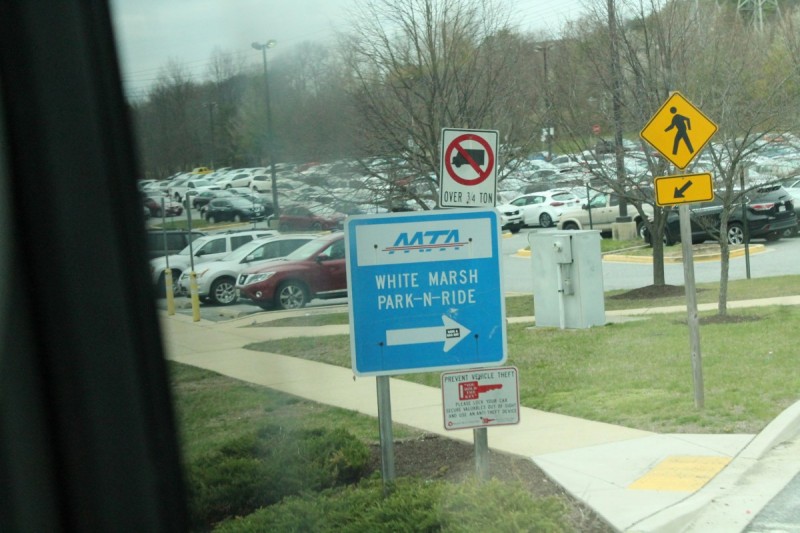Baltimore’s suburb-to-suburb express buses aren’t attracting many riders. Why not?

View from a MegaBus. Image by Elvert Barnes licensed under Creative Commons.
The Maryland Transit Administration (MTA) is eliminating three suburb-to-suburb express bus routes around Baltimore due to low ridership. The routes were introduced in 2016 to give people commuting to suburban job centers a transit option that avoided downtown congestion.
It’s a good idea in theory, so why aren’t these routes working?
MTA’s Express BusLink routes (Google map). Routes to be eliminated are Express BusLink 102 (purple) between Sheppard Pratt Hospital and White Marsh, Express BusLink 106 (orange) between Sheppard Pratt Hospital and Owings Mills, and Express BusLink 107 (red) between Old Court and BWI Airport. 
First, it’s important to note these routes are useful to some riders but MTA, like all transit agencies, has to balance the competing objectives of ridership and coverage. Since low ridership is the reason for the cancellations, I decided to look into possible explanations for that low ridership.
The routes’ destinations might not be popular enough to support dedicated express service
All the other Express BusLink routes go to downtown Baltimore, generally stopping only to pick up more passengers headed there. This makes sense. Downtown is a popular enough destination that buses going only there attract riders.
The 102, 106, and 107 routes, of course, don’t go downtown. While they serve secondary hubs like Towson and BWI Airport, those places simply might not have the critical mass of jobs and activity to support their own dedicated express service, especially when most of them are already served by the regular transit network.
The route areas are auto-oriented
Transit tends to thrive in dense, urban areas where it offers a more convenient alternative to driving. Baltimore’s downtown express routes work because they let people opt out of sitting in traffic, looking for parking, and (for some) paying tolls. Generally, the suburban destinations on the 102, 106, and 107 routes don’t present the same disincentives to driving. In fact, most of them were built for cars and are hard to navigate without one.
It’s hard for transit to compete with driving in places like White Marsh, where Express BusLink 102 ends. Map by Google. _800_636.png)
Suburban Baltimore’s auto-oriented land use patterns also force the routes themselves to deviate and backtrack in order to serve destinations. This makes trips longer and less attractive to riders.
Express BusLink 107 serves UMBC and CCBC Catonsville, but goes way out of its way to do so. Map by Google. _800_545.png)
The routes don’t fulfill their grid potential
Transit expert Jarrett Walker makes a compelling argument for high-frequency, gridded transit networks (as opposed to radial, downtown-oriented ones) that allow direct trips “from anywhere to anywhere” within the system. At first glance, these routes appear to form the outer orbit of a radial grid. (For the full effect, turn on the other transit layers here.)
However, because they run only during weekday peaks, they’re of little use for connecting to the larger network. (One way MTA could unlock more grid benefits might be directing resources from these canceled routes toward higher frequencies on some of its orbital LocalLink routes.)
What else do you notice about these routes? How might they be improved if MTA decides to bring them back in the future?
